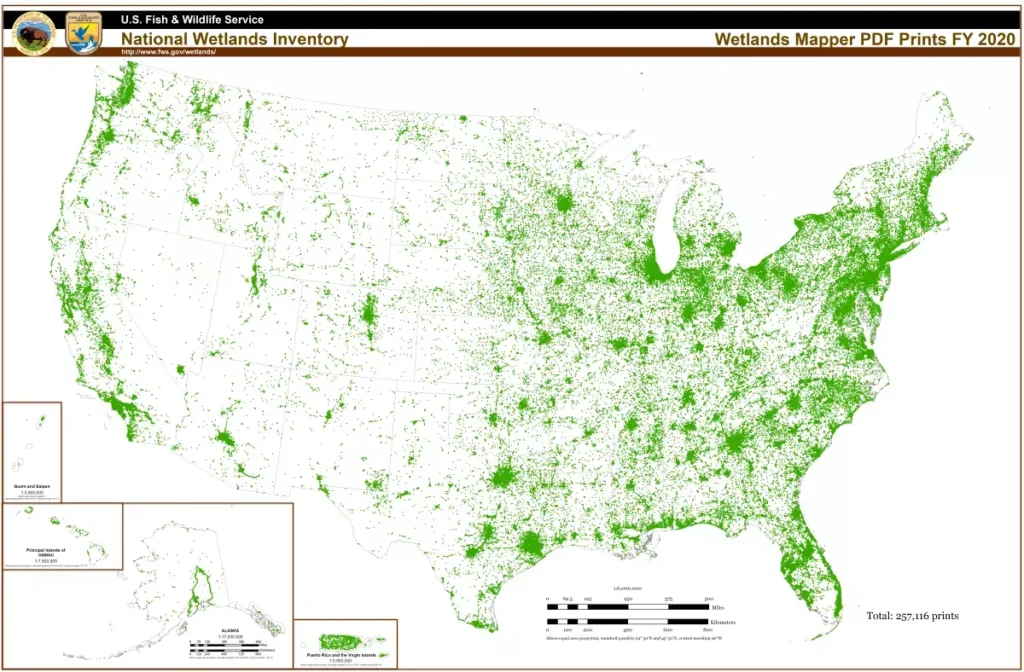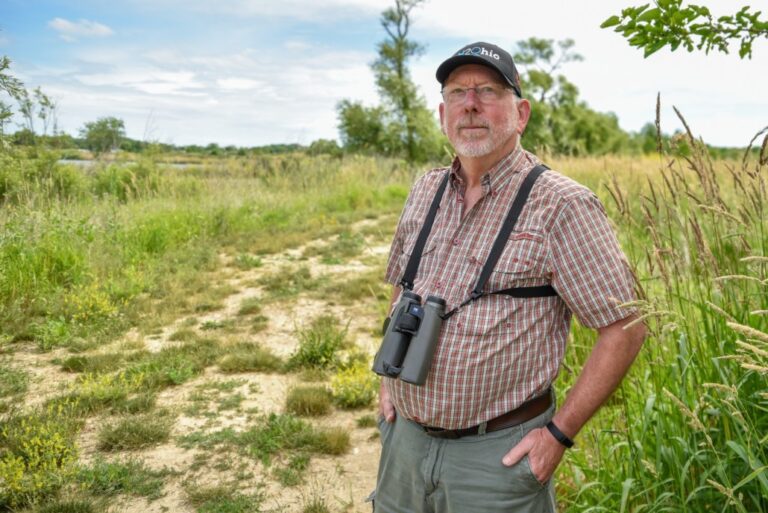Ray Stewart is ambassador for the Ohio Wetlands Association. He stands on a preserve with two wetland areas. Both of them were federally protected, but a Supreme Court ruling removed protections from one of the wetland areas through a decision named Sackett v. EPA. Stewart wants Congress to pass better wetland protection laws. Photo: Lester Graham/Michigan Radio
A recent U.S. Supreme Court decision removed federal protections for many wetlands. The Great Lakes region has some state protections but they vary from state to state. But in a watershed like the Great Lakes basin, wetland protections are only as good as the state with the weakest laws.
The Sackett versus EPA case basically rules that if the wetland is directly connected by surface water to a lake or stream, it’s a federally protected part of what’s called the Waters of the U.S. Otherwise, it’s not protected.
“…in a watershed … wetland protections are only as good as the state with the weakest laws.”
That leaves it to each state to decide whether to and how to protect the wetlands that, for 50 years, were protected by the Clean Water Act.
Environmental groups have repeatedly noted that the Supreme Court did not base its decision on scientific evidence, but instead only on private property rights.
On a pleasant day in Ohio, Ray Stewart was sitting on a bench at the Great Egret Marsh, a Nature Conservancy preserve next to Lake Erie. He’s the ambassador for the Ohio Wetlands Association. He was showing me a part of the wetland preserve connected to a lake harbor. It is still protected under the Clean Water Act.
“But if we look over our shoulder here, there is another marshy area that is part of this preserve. And it is it is totally isolated by an embankment surrounding it. But because it doesn’t have a surface connection, then it doesn’t fall under the new definition of Waters of the United States with this recent Sackett v. EPA,” he said.

The two wetlands are equally valuable in helping to filter out contaminants and reducing flooding. Like all wetlands, they’re also among the most productive ecosystems for the organisms at the bottom of the food web as well as for fish, waterfowl, and birds of prey such as bald eagles.
The states, individually, can make laws stronger laws than the federal ones and some of them already have them. But they don’t all have the same level of protections for wetlands. The eight Great Lakes states are a good example.
According to Earth Justice, Minnesota and New York have some of the strongest protections for wetlands in the nation.
Wisconsin, Michigan, Indiana, Ohio, and Pennsylvania have […]
Full article: www.circleofblue.org

